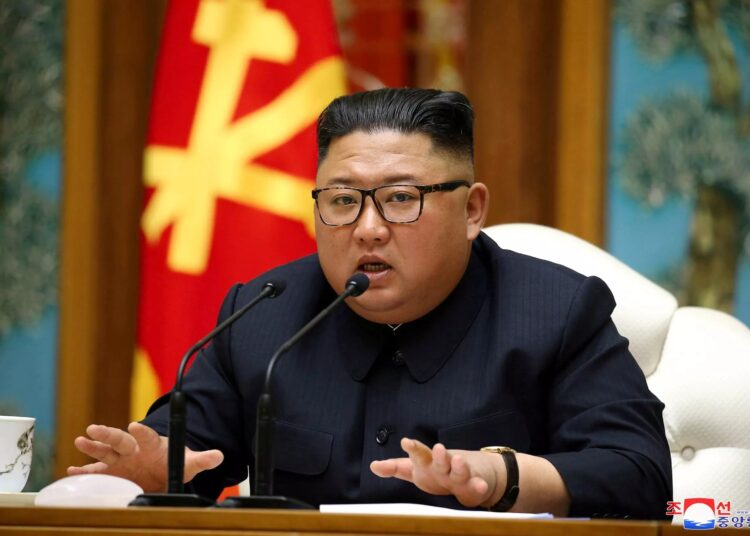North Korea announced on Thursday that its constitution now officially designates South Korea as a “hostile” state.
This declaration marked the first time Pyongyang has acknowledged legal changes proposed by leader Kim Jong Un earlier this year.
Relations between the two Koreas have deteriorated since Kim in January defined Seoul as his country’s “principal enemy” and said the North was no longer interest in reunification.
LEADERSHIP reports that after months of laying fresh mines and ramping up security on the border, the country this week blew up roads and railways linking it to the South, calling it “an inevitable and legitimate measure”, the official Korean Central News Agency said.
The move was “taken in keeping with the requirement of the DPRK Constitution, which clearly defines the ROK (South Korea) as a hostile state,” KCNA said, the first time the North has mentioned a revision of its basic law.
Last week, the country held a key meeting of its rubber-stamp parliament, where experts widely expected the constitution to be revised after Kim’s explicit call for it in January.
Under a 1991 inter-Korean accord, relations between the North and South had been defined as a “special relationship” rather than state-to-state relations, part of a process aimed at eventual reunification.
South Korea’s military on Tuesday released video footage of North Korean soldiers dynamiting deeply symbolic roads and railways connecting the two Koreas, days after Pyongyang’s military had vowed to “permanently” seal the border with the South.
KCNA said the move was “part of the phased complete separation of (North Korea’s) territory, where its sovereignty is exercised, from the ROK’s territory,” using the acronym of South Korea’s official name.
North Korea said that sections of the key inter-Korean roads and railways had “been completely blocked through blasting”.
South Korea’s defense ministry dismissed Pyongyang’s claim that the move was a “legitimate” measure as a “one-sided assertion.”
Experts have said the detonations may have been done for domestic propaganda reasons, with some pointing out that Pyongyang appeared to have used South Korean military images in its media coverage of the event.
“The ongoing commitment to fortifying the southern border seems to reflect an intention to permanently solidify hostilities with the enemy state,” Yang Moo-jin, president of the University of North Korean Studies in Seoul, told AFP.
North Korea also recently accused Seoul of using drones to drop anti-regime propaganda leaflets on the capital Pyongyang, with Kim convening a security meeting to direct a plan of “immediate military action” in response, state media reported Tuesday.
Seoul’s military initially denied sending drones north but has subsequently declined to comment, even as Pyongyang has warned it would consider it “a declaration of war” if another drone was detected.
Activist groups in the South have long sent propaganda northwards, typically carried by balloons, but some have also flown small, hard-to-detect drones into the North.
North Korea has been bombarding the South with trash-carrying balloons since May, in retaliation for the activists’ propaganda missives.
Pyongyang earlier this week said it had “clear evidence” that Seoul’s military was behind the recent drone incursions.
JCS spokesperson Lee Sung-joon told reporters on Thursday the claim was “something North Korea should verify”.
North Korea has previously sent drones into the South in 2022, five of Pyongyang’s drones crossed the border, prompting the South Korean military to fire warning shots and scramble fighter jets.
However, the jets were unsuccessful in shooting down any of the drones.





